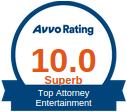In his capacity as a Columnist for California Sports Lawyer®, Founder and Managing Attorney Jeremy Evans has written a column about the potential for growth and popularity for the Major League Baseball (MLB) Draft.
You can read the full column below.
~
The Major League Baseball (“MLB”) Draft is not as popular from a viewership standpoint as the National Football League (“NFL”) or the National Basketball Association (“NBA”) drafts. MLB’s draft is more comparable to the National Hockey League (“NHL”) or Major League Soccer (“MLS”) SuperDraft (e.g., college draft) in terms of viewership and/or league structure. Interestingly, MLB, NHL, and MLS all have similar league structures in that they have minor league systems. The NFL does not have a minor league and drafts from the NCAA institutions, while the NBA has a G-League (developmental league), but it is not near the same level or size as the aforementioned systems.
On the one hand, MLB is at a disadvantage because the NCAA student-athletes who get drafted by an NFL or NBA team are doing so knowing that the draftees will play immediately on a team’s roster or likely not play at all. Whereas in MLB, there is generally a significant time gap of three-five years or sometimes longer between getting drafted and playing on a 26-man roster. Some players never make it past Triple A or the 40-man roster. The NHL is most similar to MLB, while MLS has club levels and overseas opportunities that rival and exceed American ones, particularly as the sport continues to grow in popularity in the United States.
The NFL and NBA have immediate gratification with their prospects in seeing them play at the highest level. However, the development process in baseball does not move that fast. There are also twenty rounds in the MLB Draft. The NFL has seven draft rounds and the NBA has two. The NBA used to draft prospects until there were no more prospects and sometimes reached twenty-one rounds. In 2022, MLB moved from forty to twenty rounds with the new collective bargaining agreement. In 2020, MLB also contracted the Minor League Baseball system from 160 to 120 minor league affiliates. That is still 600 new players every year who are on the farm fighting for their chance at an MLB roster.
There sheer size of the MLB Draft and the length of time between the farm and stardom is long and rare. It works against growing the popularity of the MLB Draft. Despite MLB’s efforts to grow the popularity of its Draft through fewer minor league teams and draft rounds, it might take the growth of name, image, and likeness (“NIL)” in college baseball to increase popular interest and notoriety with the players. Television deals in primetime hours could help with this, but viewership needs to justify the commitment.
On the other hand, and in the end, talent wins. Meaning, that the more talent in baseball can be highlighted and showcased in high school and college, and the more those athletes excel on the brightest stages, the more popular their names will become. When those names get highlighted, interest will grow with their draft prospects on draft day. NIL will help to grow that interest and so will the increase in college baseball players with fewer draft rounds and minor league teams. Adding international players to the MLB Draft would also help with popularity and growth of the game. It is an arduous road, but not impossible to grow the game of baseball and its popularity on draft day.
~
About Jeremy M. Evans:
Jeremy M. Evans is the Chief Entrepreneur Officer, Founder & Managing Attorney at California Sports Lawyer®, representing entertainment, media, and sports clients in contractual, intellectual property, and dealmaking matters. Evans is an award-winning attorney and industry leader based in Los Angeles and Newport Beach, California. He can be reached at Jeremy@CSLlegal.com. www.CSLlegal.com.
Copyright © 2024. California Sports Lawyer®. All Rights Reserved.





